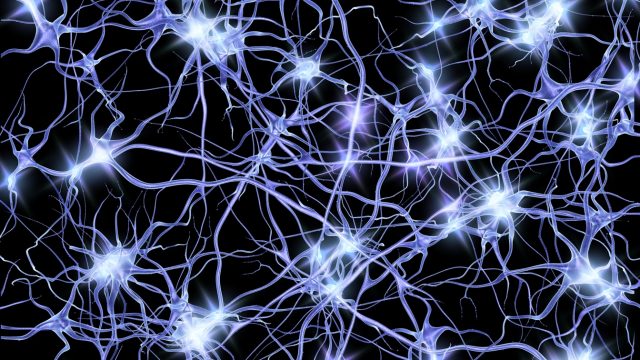Scientists Develop Cellular ‘Glue’ That Could Change Regenerative Medicine

Nerve cells are difficult to heal after disease or trauma, but UCSF’s research might change that. (Credit: PASIEKA/Getty Images)Despite how efficient the cells in our bodies can be, they still need something to hold them all together and form tissues. This job goes to adhesive molecules, or cell surface proteins that define individual bonds and help to form cellular matrices. This vital function ensures our bodily tissues remain strong, our immune systems remain effective, and our nerve cells continue to facilitate communication. Unfortunately, this system comes with its caveats: Adhesive molecules bind cells together how they want to, and in certain systems (like the nervous system), adhesive molecules aren’t enough to reconstruct damaged tissues.
One group of researchers aims to change this via outside intervention. A team of bioengineers and molecular pharmacologists at the University of California San Francisco have developed what they call a cellular “glue.” The custom-engineered cells have already demonstrated an ability to help scientists direct the way certain cells bond with one another, offering a unique opportunity to orchestrate tissue construction and regeneration.
The team’s study, which was published last week in the journal Nature, describes a process by which they reprogrammed existing cells to take on custom purposes. By combining orthogonal (or one-directional, in this case) molecular interactions outside a cell with native molecular interactions within the cell, the researchers found they were able to utilize the cell’s existing adhesive properties in virtually any way they liked. This ultimately allowed the researchers to control intercellular adhesive interactions.
“The properties of a tissue, like your skin for example, are determined in large part by how the different cells are organized within it,” first author Dr. Adam Stevens said in a statement. “We’re devising ways to control this organization of cells, which is central to being able to synthesize tissues with the properties we want them to have.”
The researchers’ cellular “glue” could have major implications for regenerative medicine, in which tissues and organs are rebuilt or replaced following some type of damage. The nervous system, as stated previously, is notorious for being somewhat of a hopeless cause after trauma or disease. But now that scientists might be able to customize how those cells bind together, there could be hope for restoring function to damaged nervous tissues. The team’s engineering discovery might also facilitate the construction of organs for transplant or disease models for lab research.
Now Read:

Comments are closed.